While not officially classified as such, there is a compelling argument that the Moon revolves around the Sun rather than the Earth.
If we examine the Moon’s path from a Sun-centered perspective, we find that its trajectory is consistently convex. As stated in a Wikipedia article:
Unlike most moons in the solar system, the Moon’s trajectory closely mirrors that of its parent planet. The Sun exerts more than double the gravitational force on the Moon compared to the Earth’s gravitational pull. This explains why the Moon’s path is always convex when viewed from a great distance within the Moon/Earth/Sun system, and why it never appears concave or looped.
If the Earth were to vanish abruptly, the Moon would still maintain its trajectory around the Sun (likewise for any other satellite) and it possesses sufficient size to qualify as a planet (if one were to exclude it).
Conversely, in a reference frame centered on Earth, the Moon follows an elliptical path around the Earth (with some notable, yet not dominant, deviations caused by the gravitational force of the Sun).
Some people consider the Earth-Moon system to be a system of double planets due to the Moon being relatively large in size; the mass ratio between the Earth and Moon, approximately 81:1, is significantly smaller than that of most other natural satellites in the solar system. The unofficial requirement for a double planet system is that its barycenter must be located outside of both bodies. According to this requirement, the Earth and Moon form a regular planetary moon system since their distance from each other is around 60 Earth radii, but their mass ratio is 81:1, so the center of mass is always well within the Earth.
However, this criterion appears to be quite arbitrary. If the Moon were to be positioned approximately one-third farther away or have about one-third more mass, the barycenter would be located above the Earth’s surface. In my opinion, this slight change wouldn’t be sufficient to consider it a planet. Nonetheless, if the Earth and Moon were of similar mass and orbited each other at a comparable distance, we would likely refer to them as a double planet system. Consequently, the official definition of a planet would need to be adjusted accordingly. (Of course, any such criterion would still be somewhat arbitrary.)
This article also explores the debate surrounding whether the Earth-Moon system can be classified as a dual planet. The consensus is that it cannot, and the 2005 resolution from the International Astronomical Union (IAU) that defined the current criteria for a “planet” explicitly identifies eight planets: Mercury, Venus, Earth, Mars, Jupiter, Saturn, Uranus, and Neptune.
Therefore, the Moon is not officially recognized as a planet. However, it does possess certain characteristics of a planet. In fact, the issue is more about the interpretation we assign to the term rather than the objective astronomical or physical reality.
The term “planet” originates from the Greek word for “wanderer,” which was used to describe various celestial bodies that appeared to move differently from the fixed stars.
+1. I am uncertain as to why the official definition of a planet is not simply defined as “Mercury, Venus, Earth, Mars, Jupiter, Saturn, Uranus, Neptune, or Pluto”. This definition would be clear-cut, putting an end to all debates, and could be easily justified by highlighting the lack of commonalities between these bodies aside from their historical connection to the word planet, as you have previously mentioned.
If we were to discover a celestial body with the size of Neptune in an orbit of approximately 150 AU, I believe it should be classified as a “planet”.
There have been numerous discoveries of exoplanets, or “planets” that orbit stars other than our own. If we are going to use the term “planet,” it is important to establish a consistent definition.
I recently listened to an interview with a planetologist (a type of geologist) discussing the status of Pluto. He mentioned that planetologists have a different perspective on this matter compared to observational astronomers. Planetologists find Pluto interesting due to its unique characteristics such as its spherical shape, stratification, and ability to maintain an atmosphere. This suggests that there may be valid reasons for having multiple definitions of a planet. Perhaps we can exclude Pluto from the category of planetary systems but include it in the field of planetology.
Pluto is also intriguing because of its moon, Charon, which has a weight ratio of approximately 9 compared to Pluto and a barycenter that lies outside of Pluto.
The sun: a celestial body with distinguishing features
The annular solar eclipse that occurred on July 22, 2009
We frequently come across news of scientists discovering new phenomena or conducting research on various stars and planets. However, few of us stop to ponder why certain celestial bodies are classified as planets while others are identified as stars. What sets them apart? At some point in our lives, most of us have asked the seemingly simple question: “Is the Sun a star or a planet?” While many would confidently answer that the Sun is indeed a star, not everyone can articulate the reasons behind this classification.
Naturally, one might wonder: what distinguishes a star from a planet?
The distinction between them is vast, although it may not be readily apparent
An animated representation of the life cycle of a prominence
1. Primarily, stars have the ability to emit their own light and heat, in contrast to planets which can only reflect light from other celestial bodies and are inherently dark.
2. Stars possess much higher surface temperatures compared to any known planets. Their average surface temperatures range from 2000 to 40000 degrees, not to mention the inner layers where temperatures can reach millions of degrees.
Data from SDO, the Sun’s solar research mission, spanning three years of operation.
3. Stars significantly outnumber even the largest planets in terms of mass.
4. All celestial bodies, including planets, revolve around their luminaries in elliptical orbits. These luminaries remain motionless, serving as a focal point for the planets’ movement. For example, our Earth revolves around the Sun, enabling us to witness the various phases of the planets, much like we observe the different phases of the Moon.
Total Solar Eclipse, composite image
5. Unlike stars, which consist primarily of light elements, planets are composed of a combination of solid and light particles. This chemical composition distinguishes planets from stars in the universe.
6. One characteristic feature of planets is that they often have one or more satellites orbiting around them. In contrast, stars do not have such “neighbors” in their vicinity. However, the absence of a satellite does not necessarily determine whether a celestial body is a planet or not.
We can confirm without a doubt…
A coronal mass ejection occurred on September 14, 2013
It is now unequivocally established that the Sun is an average star, commonly referred to as a G-type yellow dwarf. This is due to the fact that it possesses a system of eight orbiting planets, collectively known as the Solar System. The Sun itself emits both light and heat, with an average surface temperature ranging from 5000-6000 K. Comprised predominantly of light elements, such as hydrogen and helium, which make up nearly 99% of its composition, the Sun is primarily gaseous. In contrast, only 1% of its composition is solid. Constant thermonuclear reactions occur on its surface, fueling its energy production. Furthermore, the Sun dwarfs any of the planets within the Solar System in terms of size.
comments powered by HyperComments
Enjoyed reading this article? Share it with your friends!
What classification does the Sun and Moon fall under – star or planet? – domino22
Do the Sun and Moon belong to the category of stars or planets?
- The Moon, being a satellite of the Earth, does not have a clear classification as either a star or a planet.
- The Sun is classified as a star, while the Moon is a satellite of a planet, rather than being classified as a planet itself.
- Classifications: Sun – star, Moon – planet.
- Regarding the stars.
- According to one perspective, the Moon is considered a planet and the Sun is considered a star.
- Singing: “The Sun is a star and the Moon is a planet.”
- Classification: Sun – star, Moon – planet.
- The sun is comprehensible. There are a few issues with the moon. Some astronomers regard the earth-moon system as a binary planet. However, the masses of these two entities differ only by a factor of 81, which is sufficient to classify only the earth as a planet and the moon as a satellite of the planet, despite their significant size. In the solar system, only Jupiter possesses more massive satellites, but its mass is significantly larger than that of the earth.
- The sun and moon are celestial bodies that are also known as luminaries. Within the sun, thermonuclear reactions occur, which serve as its internal source of energy and provide its luminosity. Similarly, other stars shine through similar processes. On the other hand, the moon relies solely on its own gravity as it lacks internal sources of energy. This characteristic is also true for other planets and planetoids. As a result, the apparent luminosity of these objects is the outcome of reflecting the luminosity of another source. The main distinction between a planet and a planetoid lies in their size and orbital distance from the central object. A planet tends to be significantly larger compared to other celestial bodies in its orbit. In this regard, Pluto is classified as a planetoid rather than a planet, and it forms a double planetoid together with its moon, Haron. It is worth mentioning that for satellites of planets, such as planetoids, the central object is the planet itself. Additionally, it is important to note the Earth-Moon pair, which some individuals consider to be a “double planet” due to the relatively small difference in mass and size between the two elements.
Planet, Satellite, and Star: The Fascinating World of Knowledge
The world we inhabit would be vastly different were it not for the significant impact of two of the most prominent and radiant entities in our celestial expanse. One of these awe-inspiring objects is the star, a colossal sphere of ionized gas that serves as the central point around which our planet revolves. Its immense size and radiant energy not only illuminate our solar system but also contribute to the creation of the conditions necessary for life on Earth.
The second object of interest is a comparatively smaller sphere of rock, which, despite its size, has played a crucial role in shaping Earth’s history and exerting its influence on us. Earth, essentially an enormous mass of rock, is primarily composed of elements such as iron, oxygen, silicon, and magnesium. Positioned as the third planet from the Sun and the fifth largest in our solar system, Earth follows the gas giants Jupiter, Saturn, Uranus, and Neptune.
Earth continues to hold the title of being the largest solid entity within our solar system, surpassing its neighboring rocky planets, Mercury, Venus, and Mars. Its outer layer is divided into large plates, some of which are even as large as entire continents. The Earth’s interior transfers heat from its molten core towards the cooler surface. This dynamic process, known as tectonics, results in the creation of ocean basins, the formation of mountain ranges, and the awakening of volcanoes.
All these factors come together to create an optimal habitat for life on Earth and represent the ultimate influential force that shapes our planet. From microscopic bacteria to the largest living organisms, the development of life has been intricately tied to the evolution of our planet.
While the Moon may seem like a barren and airless piece of rock compared to Earth, it possesses its own unique characteristics. It may not share Earth’s features at first glance, but our satellite stands out in numerous ways.
Being one of the largest satellites in the solar system (and the largest in proportion to its planet’s size), the moon holds significant influence over our planet. It continues to affect Earth today by causing tides, while also providing protection against internal and external factors that could potentially cause drastic changes to our world. Notably, it plays a role in stabilizing the Earth’s tilt in its axial plane, which contributes to the diverse climate zones we experience.
The Moon stands as the closest celestial body to Earth and remains the only one that humans have visited. Devoid of an atmosphere, water, and minimal geological activity that could shape its surface over time, the Moon serves as a remarkable control sample. Its rocks contain a preserved history of the solar system and offer insights into the challenges our planet has faced throughout its extensive existence.
Nevertheless, the Sun outshines both the Blue Planet and the Moon, despite being 400 times farther from us than the Moon. Surprisingly, when we gaze at the sky, the Sun and the Moon appear to be the same size.
Unlike the Blue Planet and the Moon, the Sun is a completely different entity – a scorching sphere of gas. The majority of the Sun is dominated by hydrogen, the lightest and simplest element. However, beneath its visible surface, the conditions are extremely hot and dense, allowing hydrogen nuclei to merge and form heavier elements.
Each fusion reaction that occurs within the Sun releases a small amount of energy. However, due to the Sun’s colossal size, its overall energy output is astronomical – 25 trillion times more than the Earth’s total energy consumption. This energy is released in the form of visible light and invisible radiation, providing warmth and illumination to the entire solar system.
This influence diminishes significantly as you move further from the Sun – so Mercury (the nearest planet to our star) experiences scorching temperatures that are hot enough to liquefy lead. Meanwhile, Mars rarely sees temperatures above freezing, and the rest of the solar system endures the most frigid temperatures imaginable.
The Sun also asserts its presence in other ways. Its atmosphere extends well beyond its visible surface and even beyond the boundaries of the solar system. Particles that have departed from the Sun form the solar wind, a flow of matter moving in all directions.
This phenomenon becomes visible as the aurora borealis, or northern lights, on Earth and other planets. It extends far beyond the orbit of the farthest recognized planet, Neptune (and even beyond the orbit of Pluto).
Is the Sun a star or a planet?
This question is asked sooner or later by every person on Earth, because the Sun plays a crucial role in determining the existence of our planet. It influences all the most significant processes on Earth. The Sun is classified as a star. There are specific criteria that differentiate between planets and stars, and the Sun perfectly fits the characteristics associated with stars.
Stars: Their Key Characteristics
Primarily, a star distinguishes itself from a planet by its ability to emit both heat and light. Conversely, planets merely reflect light and inherently possess a dark nature. The surface temperature of any given star significantly surpasses that of any planet.
The average surface temperature of stars varies from 2,000 to 40,000 degrees Celsius, with the temperature escalating as one approaches the star’s core. In proximity to the core, temperatures can soar into the millions. For instance, the Sun’s surface temperature amounts to 5,500 degrees Celsius, while its core reaches a staggering 15 million degrees.
Stars, in contrast to planets, do not have orbits, whereas planets orbit the star that creates the system. Within the solar system, the Sun is the only star, and all planets, their moons, meteorites, comets, asteroids, and space debris revolve around it. Stars, being more massive than even the largest planets, account for the majority of the solar system’s mass. The Sun alone makes up 99.86% of the total volume.
The Sun’s equatorial diameter measures 1,392,000 kilometers, which is 109 times larger than Earth’s equatorial diameter. Furthermore, the Sun’s mass is approximately 332,950 times that of our planet, equivalent to 2×10^27 tons.
Stars are primarily made up of light elements, whereas planets are formed from solid and lightweight particles. The Sun is composed of hydrogen, which makes up 73% of its mass and 92% of its volume, and helium, which makes up 25% of its mass and 7% of its volume. Trace amounts of other elements such as nickel, iron, oxygen, nitrogen, sulfur, silicon, magnesium, calcium, carbon, and chromium make up a very small fraction (about 1%) of the Sun’s mass.
Another distinguishing characteristic of stars is the occurrence of nuclear or thermonuclear reactions on their surfaces. These reactions, which also occur on the surface of the Sun, involve the rapid transformation of substances into other substances, resulting in the release of large amounts of heat and light.
The Earth receives the light and heat it requires from the products of thermonuclear reactions happening on the Sun. However, these reactions are not observed on the surface of other planets. Many planets have satellites, and certain celestial bodies even possess multiple satellites. A star cannot have satellites, although there are planets without satellites. Therefore, the absence of a satellite is not necessarily an indication that the celestial body is a star. In order for it to be classified as a star, the other signs mentioned must also be present.
So, the Sun – the center of our solar system – is a typical star: it possesses a much greater size and mass compared to even the largest planets, consists of 99% light elements, and emits both heat and light through thermonuclear reactions occurring on its surface. Although the Sun does not have an orbit or any satellites, it serves as the gravitational focal point around which the eight planets and other celestial bodies within our solar system revolve.
To an observer on Earth, the Sun does not appear as a small point of light like other stars. Due to its proximity, we perceive the Sun as a large, radiant disk in the sky.
If the Sun were to relocate trillions of kilometers away from our planet, similar to the other stars visible in the night sky, we would perceive it as a minuscule star, just like the rest. On a cosmic scale, the distance between the Earth and the Sun – which measures 149 million kilometers – is considered relatively small.
Based on scientific classification, the Sun is categorized as a yellow dwarf. It has an estimated age of five billion years and emits a vibrant and consistent yellow light. What gives the Sun its yellow hue? It all comes down to its temperature. To comprehend how stars acquire their colors, consider the analogy of a piece of iron that is heated: it starts off as red, transitions to orange, and ultimately becomes yellow. If the iron were to be heated even further, it would turn white and then blue. The hottest stars are blue stars, with surface temperatures exceeding 33,000 degrees Celsius.
The Sun falls into the group of yellow stars. Interestingly, within a radius of seventeen light years, which encompasses approximately fifty star systems, the Sun ranks as the fourth brightest star.
[email protected]: Is the Moon considered a planet?
The Moon is not classified as a star or an asteroid; instead, it is recognized as a satellite planet. It plays a crucial role as a luminary for Earth, reflecting sunlight back to our planet. While the Sun serves as a daytime luminary, the Moon takes on the role of a nighttime luminary.
No, the Moon is actually a satellite. It holds the distinction of being the first satellite orbiting around the Earth.
The moon can be described as a celestial body, a planet, and a satellite of the Earth. Its orbit revolves around our planet.
Furthermore, it’s worth noting that the Moon is not inhabited by humans, but rather by angels.
The Moon, also known as Luna, is Earth’s only natural satellite. It is the second most visible object in the sky, right after the Sun, and the fifth largest satellite in our Solar System. The Moon holds the distinction of being the first extraterrestrial object ever visited by humans, a feat accomplished in 2008. The average distance between Earth and the Moon is approximately 384 thousand kilometers. When observed from Earth, the Moon has a stellar magnitude of -13m. The illumination provided by a full Moon on Earth’s surface measures approximately 0.25 lux.
No, the reason is that it fails to meet the requirements. The XXVI Assembly of the International Astronomical Union (IAU) determined that a planet is a celestial object that: – orbits around a star; – is not a star itself; – possesses enough mass to maintain a nearly spherical shape (hydrostatic equilibrium); – has a “clear zone” in its orbit free of other objects. This clear zone is formed during the planet formation process. However, it does fit the definition of a satellite. As per the decision made by the International Astronomical Union on August 24, 2006, an object that orbits around a central body (such as a planet, dwarf planet, or asteroid) with the barycenter of the orbit located inside the central body is considered to be a satellite.
What’s the Reason Behind Earth’s Moon’s Unfortunate Name?
In 2015, there were already 146 recognized moons in the solar system, with an additional 27 celestial objects awaiting official moon status. Each of these recognized moons bears a name that pays tribute to a deity or a character from Shakespeare’s works. Some examples include Callisto, Titan, and Prometheus. However, there is one moon in the solar system that has been saddled with an incredibly mundane name. You’re most likely familiar with it – it’s simply called “the moon.”
But why is that? It’s simply the generic term for all natural satellites. So, what is the moon’s actual name? Something scientific and intriguing, like Krelon, Krona, Auron, or Muad’Dib.
Actually, Luna is the true name of the Moon, and it is entirely humanity’s fault. It wasn’t until 1610 when Galileo directed his telescope towards the sky and discovered that small dots of light were also circling Jupiter, that astronomers became aware of the presence of moons around other planets.
Throughout the countless years of human existence, the moon has always been a familiar sight in the sky. It was only 400 years ago that we became aware of the existence of other moons. It wasn’t until Copernicus formulated the heliocentric model of the solar system that we fully comprehended that Earth is also a planet.
Despite sending a probe directly to the Sun, we are still facing difficulties in comprehending it. It was not until 1590 when Giordano Bruno first proposed the notion that the Sun is a star, for which he was unfortunately executed by burning at the stake. Ah, the good old days. Now, let’s shift our focus back to our beloved “moon.”
In scientific terms, the moon is categorized as a natural satellite, setting it apart from the artificial satellites that we have been launching for the past six decades.
The term Moon is derived from the Latin word Luna, which is the designated name for our natural satellite in Latin. While not an official or scientific term, scientists often favor the use of Latin. In the past, people used to differentiate between the moon and Luna (at least in writing) by adding a capitalized letter at the beginning of the word. This pattern applies to other celestial bodies as well. The name of our solar system is the Solar System, and our galaxy is known as the Galaxy, with a capital “G.” Similarly, when specifically referring to our universe, which may encompass multiple parallel worlds, it is referred to as the Universe.
What about the sun? In Latin, it was referred to as “sol”, sol.
If it turns out that we live in a multiverse, we will be faced with the task of naming all these universes. This will inevitably lead to the question of what our own universe is called. The official body, the International Astronomical Union, whose decision to demote Pluto we may not agree with, maintains that the capital letter is what matters. However, words can often be a source of confusion.
Despite its rather unremarkable name, our moon serves as a reminder of how much progress we have made in our scientific understanding of the universe. It is astonishing to think that we have already discovered numerous moons beyond our own solar system, and there are surely many more to come.
And when we do come across other universes, we will have to distinguish them from our own and perhaps name them after the likes of Nimoy, Sagan, and Clarke. What name would you propose for our moon?
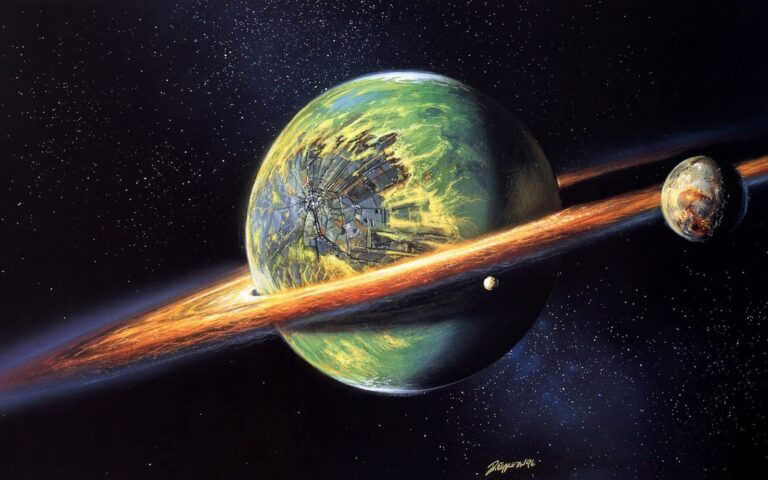
Planet similar to Earth, surrounded by a ring of debris and a satellite located on its outer edge / @Corgen
The enigma behind the Moon’s origin: how a satellite landing gave rise to the megaimpact hypothesis
The formation of the planets in our solar system followed a relatively similar process – from a protoplanetary disk, which astronomers continue to discover around other stars today. As a planet forms in its respective orbit, it acts like a cosmic vacuum cleaner, attracting all nearby planetesimals (small protoplanetary bodies) towards itself.
Eventually, almost all of these planetesimals will collide with the planet. The only exception may be small objects, similar in size to Deimos, but the Moon is so large that it couldn’t have been formed from such tiny “crumbs”.
A natural question arises: how did our celestial companion (since the word “moon” is feminine) come into existence? From the above, it is clear: it could have only happened after the completion of the Earth’s formation and solely due to the influence of powerful external forces – fragments of the Earth would not break off and ascend into the sky on their own (although in the 19th century, there was such a somewhat naive hypothesis).
Simply observing the Moon through high-quality binoculars is enough to ponder the origin of these enigmatic external forces. The satellite is adorned with numerous craters, evidence of asteroid impacts.
Perhaps a cluster of asteroids entered Earth’s orbit and, over time, collided with each other. The resulting debris formed a ring-like structure similar to Saturn’s rings. Eventually, due to gradually decreasing speed and weak collisions, these fragments coalesced to form the Moon. This intriguing hypothesis was proposed by Soviet astronomer Eugenia Ruskol in 1975. However, upon analysis of lunar soil, it was determined that this hypothesis did not hold true.
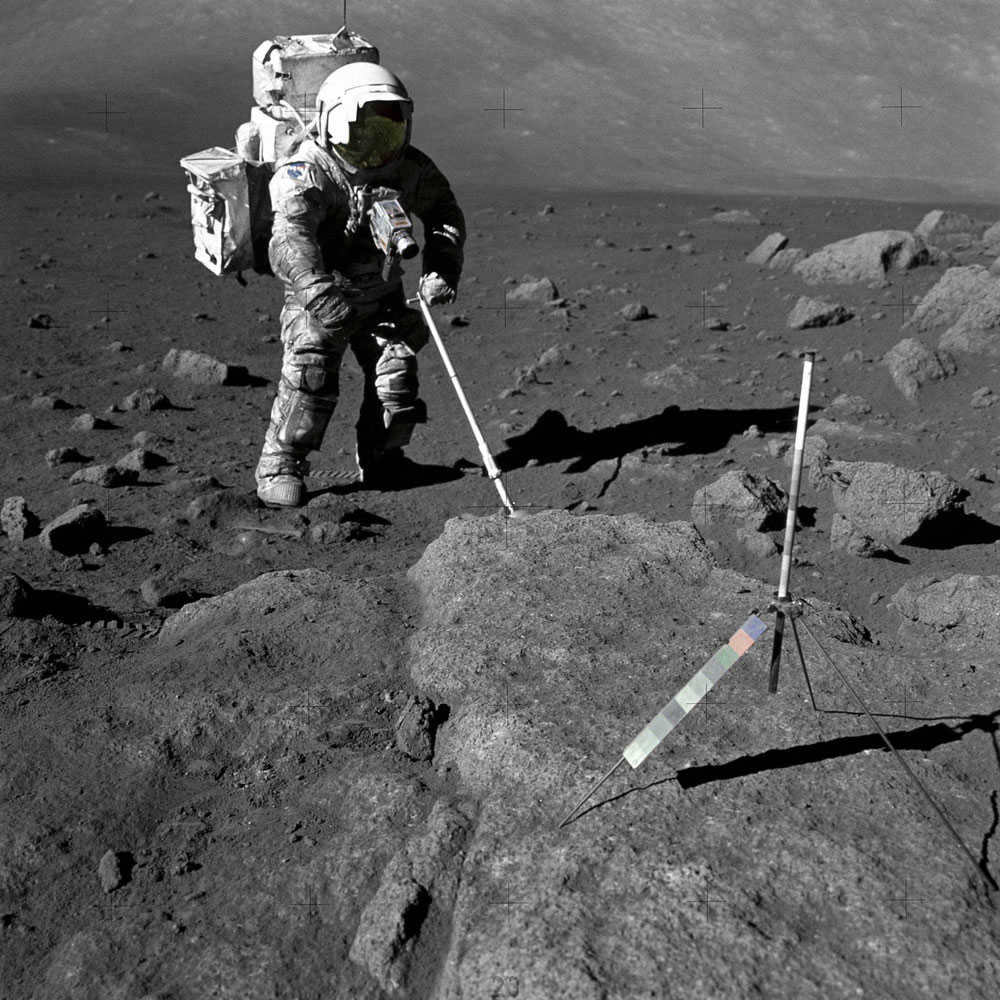
The fact is that the composition of isotopes in the lunar and terrestrial soil, as shown by the Apollo and Soviet Luna-24 samples, is nearly identical.
This indicates that the Moon could not have primarily formed from asteroids originating from other regions of the solar system, as different parts of the protoplanetary disk have distinct isotope ratios. This can be observed by studying Martian soil or meteorites found on Earth.
Furthermore, when it comes to planets, heavy elements tend to sink into the core, while the mantle contains only a small amount of them. The lunar surface exhibited a deficiency of heavy elements, such as iron, similar to that of Earth. However, in the case of asteroids, heavy elements remain present as they are too low-mass to sink.
It was evident that the Moon was primarily formed from material originating from Earth – but how did this happen?
In 1975, American scientists William Hartman and Donald Davis put forward a fascinating hypothesis known as the megaimpact theory. According to this theory, the planet Teia collided with the ancient proto-Earth approximately 4.5 billion years ago. This collision resulted in numerous fragments of our planet being thrown into Earth’s orbit, and they were subjected to intense heating during the impact event, estimated to be at least trillions of megatons of energy.
Earth scientists retaliate against Teya
For a quarter of a century, the origin of the Moon seemed to be a solved mystery. However, this notion is not entirely accurate. Recent findings have challenged the prevailing theory that the Moon was formed as a result of a massive explosion on Earth. Surprisingly, water has been discovered in lunar soil collected from Apollo and Luna-24 missions, which raises questions about the traditional explanation.
Nevertheless, there is a simple explanation for this discrepancy. It turns out that the rush to develop the U.S. lunar program led to the creation of subpar containers for the satellite’s soil samples. As a result, regolith leaked out during transportation, and water that was found in the samples was dismissed as contamination. Even the data from the Apollo ion detectors, which also indicated the presence of water in the lunar soil, was disregarded as a result.
The containers used for the Soviet samples were ordinary, so there is no need to write them off. However, another factor contributed to this: the Western world did not take notice of the Soviet efforts in this regard.
Despite this, some problems arose due to the immense impact force, estimated to be in the trillions of megatons. In the 21st century, observations from the Moon’s orbit revealed the presence of a thick layer of water ice in the craters near its poles. As of 2019, it is estimated that there are 100 billion tons of water ice in these areas.
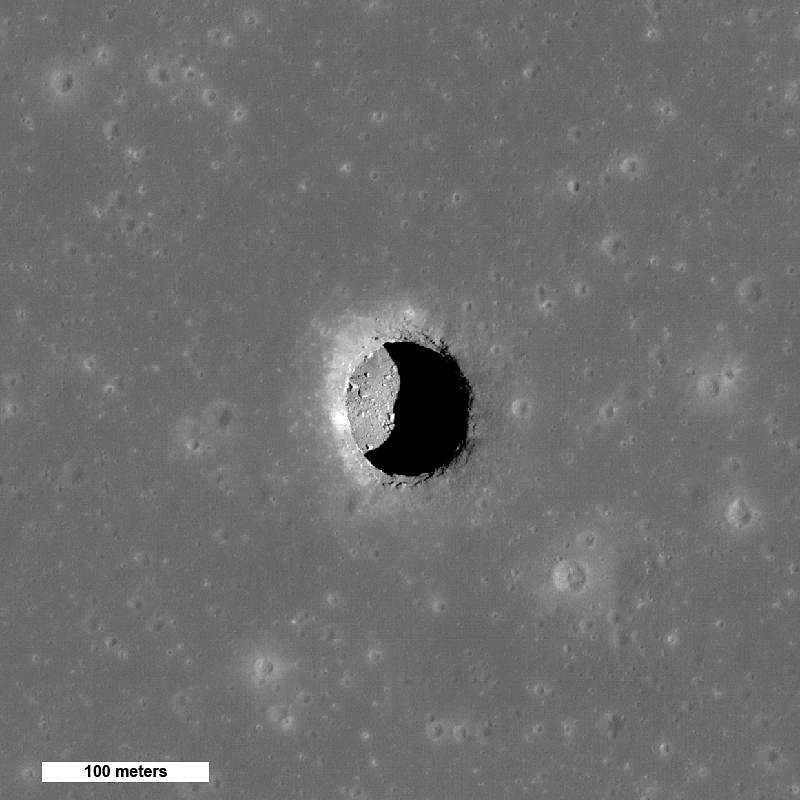
It is important to consider that we are specifically referring to what is present on the surface, within the craters. The estimation of water ice within the vast lava tubes (lunar caverns that can reach diameters of kilometers) cannot be accurately determined from orbit, and the actual quantity may be significantly higher.
This fact itself presents a challenge to the theory of “dry sublimation” as a method of obtaining lunar material from terrestrial material displaced by Teia. Water has a tendency to quickly and easily vaporize when exposed to heat, and the velocity of its molecules is typically so high that the debris simply cannot be held in place by its gravitational force.
Earth scientists have also raised objections. The force required to create the Moon would have not only vaporized the oceans but also caused lava seas to form on Earth, melting the upper layers of the planet. However, geologists adamantly assert that there is no evidence of such lava seas on our planet – not even localized ones, let alone a global lava ocean.
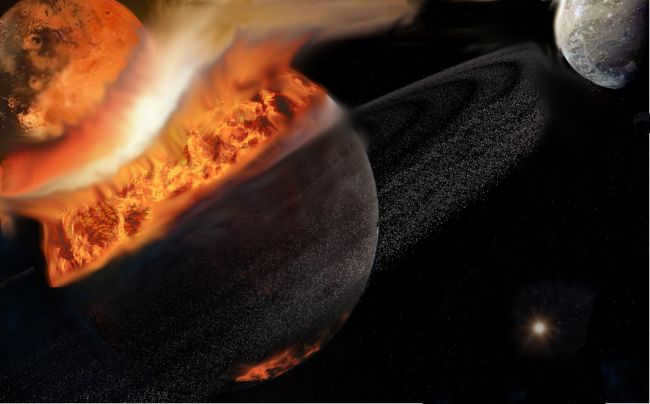
In order to resolve the question surrounding the existence of water on the moon, a theory was proposed suggesting that it was delivered there by comets originating from the outer regions of the solar system. However, it has been discovered that comets would have had to follow a specific path to reach the moon: according to Russian scientists’ calculations, at least 95% of the material from a comet’s impact would be ejected back into space.
This suggests that comets may have delivered trillions of tons of water to Earth’s satellite, which is quite peculiar considering that the moon’s proximity to Earth would naturally intercept the majority of comets passing through this region of the solar system.
Did Theia Exist?
In 2007, an alternative explanation for the challenges posed by the megaimpact hypothesis emerged. Nikolay Gorkavy published an article titled “The formation of the Moon and double asteroids,” in which he presented a different mechanism for the birth of our satellite.
He referred to his model as the “multi-impact” model and proposed that it could be a common mechanism for the creation of large satellites, not just the Earth’s Moon, but also Charon at Pluto and even double asteroids.
The multi-impact model posits that the Earth’s satellite is formed not through a single massive collision, but through numerous smaller ones. When a sufficiently large asteroid collides with the Earth, it dislodges debris from it.
However, due to the low energy of the collision, Earth does not experience the formation of lava seas. Additionally, the debris that is ejected from the collision is not completely melted, with their central parts potentially not even reaching the boiling point of water.
Upon entering Earth’s orbit, this debris had two potential outcomes for its future. This is because during the early stages of Earth’s history, there would have been a low-mass proto-satellite disk orbiting around it, moving in the same direction as our planet.
Astronomers have conducted calculations on how Saturn captures objects from the surrounding space and have accurately predicted the existence of dozens of such exotic satellites. This prediction stands as one of the most precise in the history of astronomy. Let’s explore this further.
Over time, “non-returners” have the potential to significantly increase the mass of the protosatellite disk, potentially reaching 1% or more of the total mass of the Earth.
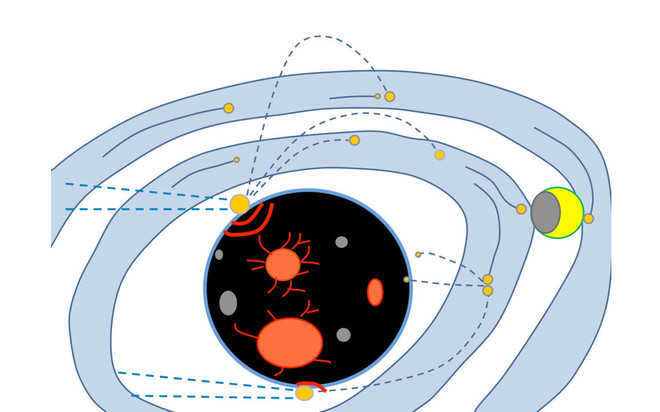
The reader will exclaim, hold on a second. What about the mundane logic? If we propel an electromagnetic accelerator into outer space, the object will either move away from the vicinity of Earth or eventually descend towards its surface.
Let’s assume that is the fate of all of Earth’s man-made satellites: they will eventually collide with the particles in the space near Earth and ultimately plummet towards the planet. How is it then that the remnants from Earth’s encounter with ancient asteroids suddenly remain suspended in the atmosphere for 4.5 billion years, coalescing into the Moon?
The main advantage of the multi-impact model is found in this aspect. In fact, a small fragment of Earth cannot remain in orbit for billions of years on its own. However, when Gorkavy analyzed the interaction of this debris with the ancient protosatellite disk, the situation was found to undergo a radical transformation.
Despite its low mass, the ancient disk possessed stable orbits for its various bodies. As the debris, propelled by another asteroid, caught up with any of the bodies in the protosatellite disk, collisions occurred and energy was transferred.
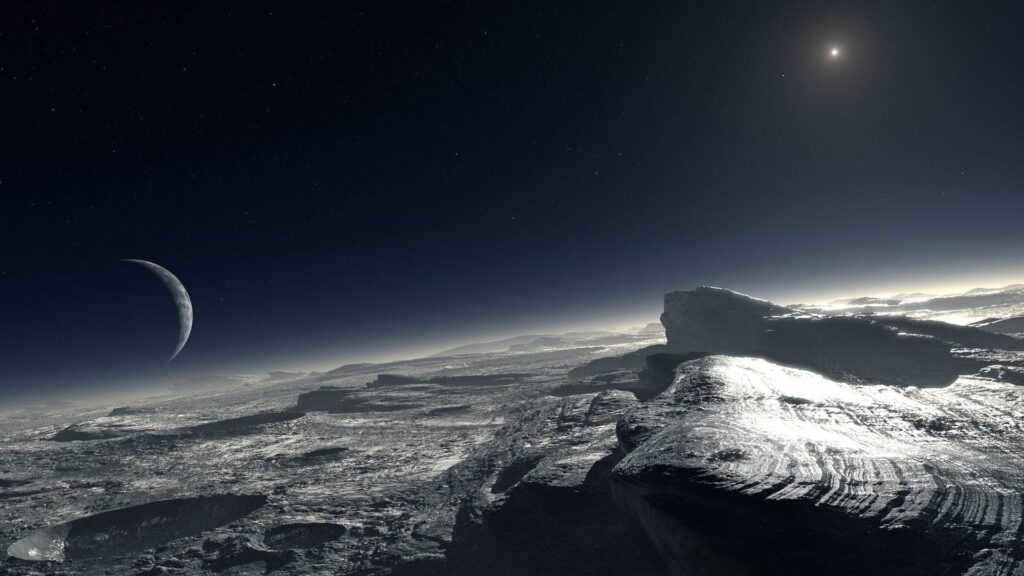
The number of asteroids required to create a moon-sized object from the material ejected from Earth appears to be quite substantial – potentially in the millions. These bodies would range in diameter from 10 to 1000 kilometers.
Currently, there are not such large quantities of these bodies in our solar system. However, the presence of numerous ancient craters on the far side of the Moon indicates that they were present three to four billion years ago. Therefore, everything aligns in theory.
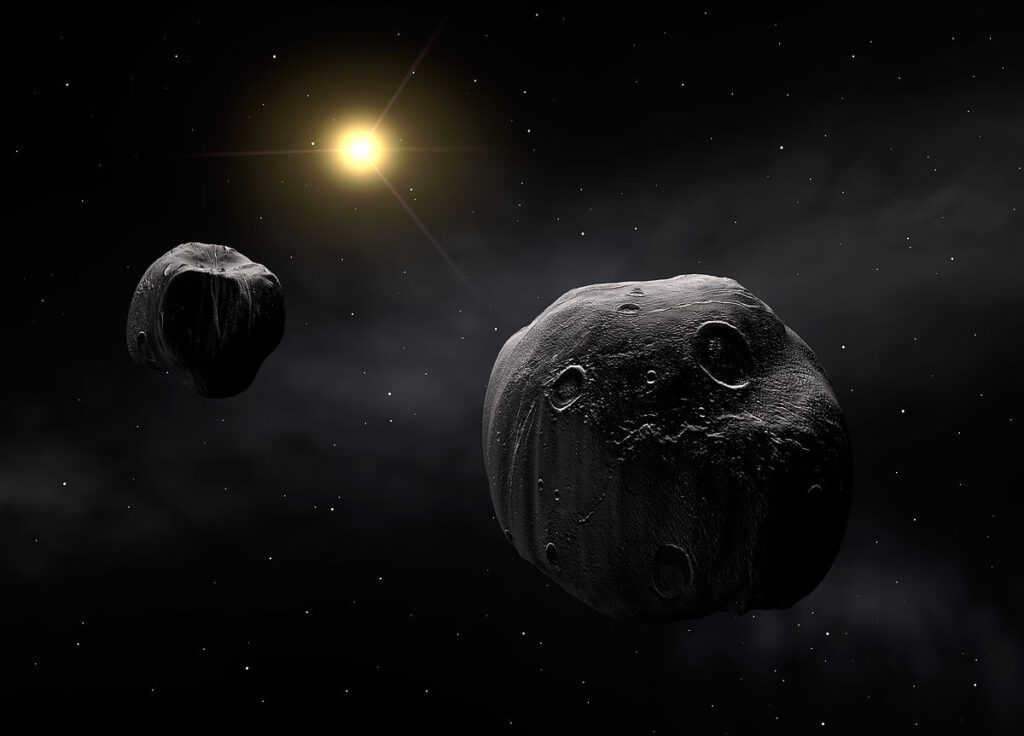
Gorkavoy’s hypothesis faced certain limitations: it lacks popularity in the United States as national scientific communities tend to favor domestic theories rather than foreign concepts, a trend observed worldwide.
Furthermore, the author’s publication in a Russian scientific journal added to the challenge of non-Russian speakers becoming acquainted with his idea. Consequently, American researchers continue to adhere to the megaimpact theory, albeit acknowledging the enigmatic nature of lunar water’s origin within it.
Japanese findings: a breakthrough in the moon controversy?
In a recent study published in Science Advances, researchers delved into the spectrometer data collected by Japan’s artificial lunar satellite, Kaguya, during its mission from 2007 to 2009. The team focused on a previously unexplored aspect of Kaguya’s observations – the detection of carbon ions. Astonishingly, their analysis revealed that an average of 50 thousand carbon ions are emitted per second from just one square centimeter of the lunar surface.
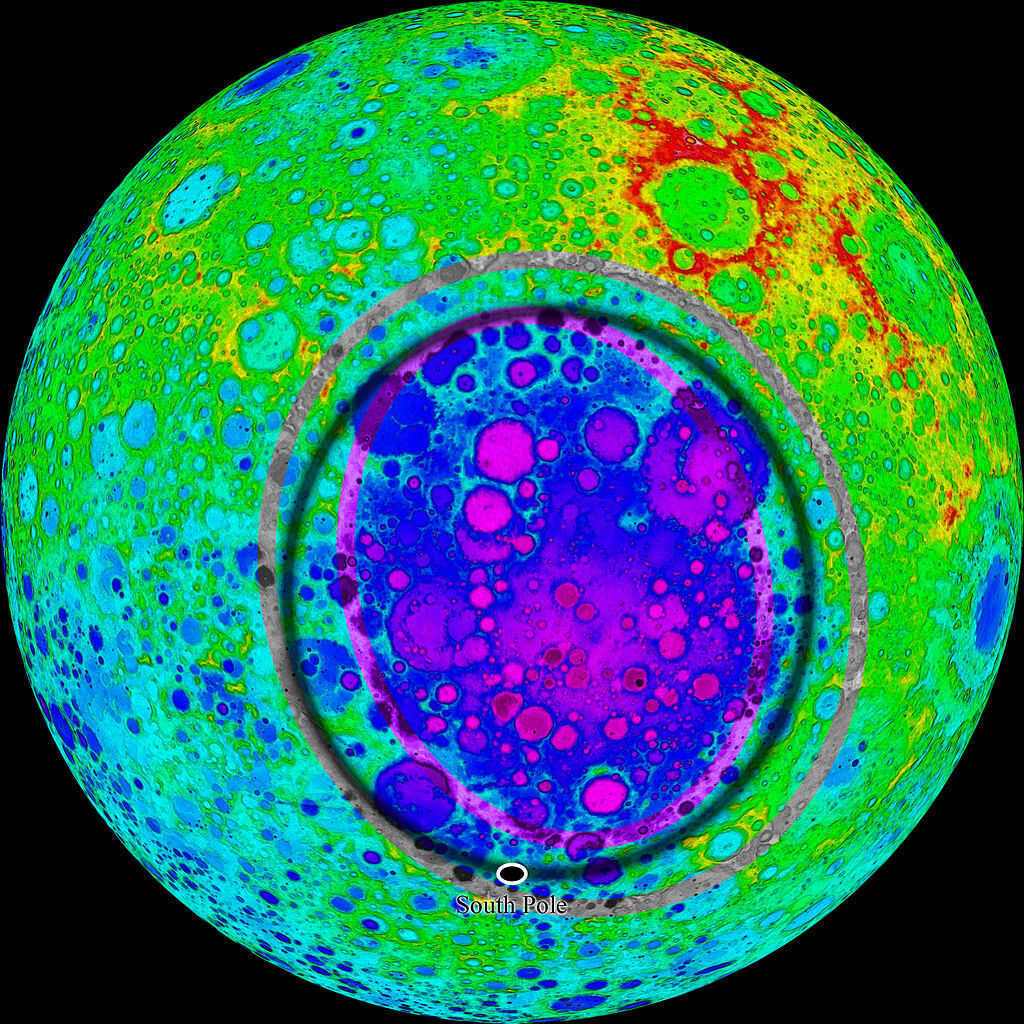
This amount is quite substantial: based on calculations, it exceeds the amount that can be delivered to the Moon by the solar wind and micrometeoroid flow. Additionally, the flow of carbon ions over the basaltic areas of the lunar seas is greater than over regolith. This is significant because basalt originates from the lunar mantle and therefore cannot contain an element that was not originally present on the Moon.
All of this indicates that carbon and other light elements must have been present on the Moon since its formation and cannot be attributed solely to an “infusion” from comets and other celestial bodies from the outer regions of the solar system.
It may seem strange, but in several instances, it serves as a valuable resource that can be used to extract methane – a promising fuel for rockets. In fact, SpaceX has already tested the first rocket engine for this fuel in 2019 through the flight of their experimental stand.
The American space agency has provided funding to SpaceX to further develop Starship, which is the largest spacecraft and carrier in Earth’s history. However, the purpose of the funding is somewhat unexpected.
Up until now, only the existence of water ice on the Moon was known. In theory, this ice can be broken down into oxygen and hydrogen, with the latter being a viable fuel. Unfortunately, its practical use beyond Earth is challenging. Hydrogen molecules are so small that even the best storage tanks start losing it in significant quantities within a few months in a vacuum.
Storing liquefied methane in tanks is a much more convenient option, as it has the ability to be stored for extended periods of time. This makes it particularly intriguing to consider using the Moon as a “refueling platform” on the journey to Mars, as obtaining methane from the decomposition of CO2 and water seems more promising than extracting lunar hydrogen from local water.
However, this is all a matter of perspective at the moment. The immediate outcome of the observations made by “Kaguya” can be easily predicted: proponents of the megaimpact theory will quickly search for an explanation and adjust their hypothesis to account for how molten rocks from a hypothetical Teia Earth impact were able to retain lighter elements.
Scientists are creative individuals, so we have confidence in their ability to succeed. They will adjust the parameters of the mega-impact once again and find a way to accommodate the newly discovered facts. However, from a strategic standpoint, their attempts to salvage the mega-impact theory are ultimately futile.
The likelihood of a collision between two planets is astronomically lower than the probability of millions of asteroids raining down on ancient Earth. The former event is so improbable that no one has been able to provide a reasonable estimate of its likelihood. On the other hand, asteroid bombardment is a common occurrence, as evidenced by the topography of the Moon and other satellites in our solar system. It is a natural process that aligns more with Occam’s razor.
It can be concluded that the concept of the Moon forming through multiple impacts will prevail, possibly not until the current generation of proponents of mega-impacts retire.
About the subject
Four companies will be engaged in the “search” for an asteroid
Researchers suggest constructing settlements inside lunar caverns
Enchanted Universe
Trending
Scientists trace ancestors of Etzi the Iceman
A recent research has uncovered that a man whose remains were preserved in the alpine ice for millennia was devoid of hair and possessed a dark complexion.
Dual civilization uncovered beneath Lake Van
Explorers specializing in underwater archaeology have stumbled upon submerged ruins and a graveyard adorned with symbols representing the amalgamation of two distinct cultures.
Scientists from Finland have demonstrated the practicality of the phenomenon known as “vacuum tunneling phonons,” proving that under specific circumstances, sound vibrations can transfer from one object to another even across a vacuum gap.
Researchers Discover Prehistoric “Ice Mouse”
A team of researchers has identified a minuscule creature that inhabited northern Alaska approximately 73 million years ago. Despite the cold conditions, this animal was capable of surviving without hibernation. Resembling a shrew, it had a weight less than that of an empty aluminum soda can.
Chemists make a shocking discovery: Vlad Tepes Dracula shed tears of blood
A group of scientists from around the world has uncovered proof that Vlad Tepes, famously known as Count Dracula, had a rare condition that caused his tears to blend with his blood.
Ancient kings during the Bronze Age engaged in city trading
Archaeologists in Turkey have stumbled upon an extraordinary tablet containing an inscription in Akkadian, which detailed an exceptional economic circumstance nearly four thousand years ago.
Arms shipment from India discovered to be destined for Armenia
An undisclosed recipient was confirmed to be Armenia after an analysis of arms shipments from India. This marks the first instance of a large-scale export of this nature from India. Previously, advanced Indian military equipment had not been sought after internationally.
Researchers disprove the notion of the “ten thousand step rule”
The belief that walking at least ten thousand steps per day is necessary for good health has been debunked by a new extensive study. It has been found that even shorter walks can be beneficial, with as few as four thousand steps being enough to decrease the risk of mortality.
Paleontologists have identified what could potentially be the largest creature ever to have existed
Enormous remains discovered in South America have been attributed to a prehistoric marine mammal, estimated to have weighed up to 340 tons – surpassing the current record holder, the blue whale, by one and a half times.
Opinions

Approximately a decade ago, Lenta.Ru published a substantial piece – an exclusive interview with a geologist named Galimov, if I recall correctly. During this informative discussion, Galimov revealed that he had been gradually formulating his unique theory regarding the origin of the solar system, encompassing the enigma of the Moon as well. His hypothesis seemed to involve the concept of turbulence within the protoplanetary disk, accompanied by the emergence of vortices wherein dust particles coalesced. I am curious, have you come across any additional insights or updates on this captivating subject?

Unfortunately, Galimov’s hypothesis, which he proposed before his untimely death from the coronavirus, is quite speculative and lacks support from other scientists. While he may have been a competent geologist, his theory on the origins of celestial bodies is disorganized and inconsistent.
According to the article, the likelihood of a planetary collision is significantly lower than that of millions of asteroids striking the ancient Earth. While this may be true, I personally believe that such an occurrence is not as extraordinary as it seems. In my opinion, our ancient Earth, which I refer to as the “ceramic” Earth, once collided and peacefully merged with another planet, known as the “polymetallic” planet. This collision resulted in the formation of our modern Earth, with the other planet becoming its core. I have elaborated on this theory in my book titled “How was the Earth created?”, which is available in electronic form on Google Books. Additionally, the Moon is also considered one of the planets in the Solar System and it was happily captured into orbit around the Earth following this event.

Examining is merely a formality. And I am so eager to discover the truth! Numerous aspects within this vast universe appear to be much simpler to me than our attempts to comprehend it.
So why can’t the most straightforward theory be that the Moon and Earth were formed simultaneously? The cloud of planetesimals and cosmic dust possessed an excessive amount of momentum. For instance, it constituted two separate streams moving at varying velocities. This is why they were unable to merge into a single planet and ended up drifting apart.


Hmm. How can they both be in the same orbit but moving at different speeds? I understand different orbits, like Lagrangian orbits, but if they are in the same orbit, then it must be because of the same gravitational forces trapping them, as mentioned earlier.
One possibility is that there is a common flow causing this. The second possibility is that there is a gravitational perturbation, perhaps from Jupiter or some other external object that passed close to the planets when they were still forming. Alternatively, it could be a result of the unstable nature of the early solar system’s orbits, where the larger planets formed earlier and began to accelerate everything else around them.
Should scientists make a choice between being men of science or fantasists? Both theories lack evidence and are unconvincing – they are merely assumptions without any factual basis. I could just as easily argue that the Moon is controlled by an advanced civilization, which would explain the seemingly “magical” alignment of its angular size with that of the Sun (the ratio of their sizes is the same as the ratio of the distances from the Earth). This theory could also account for the Moon always showing the same face to the observer (or is that just another scientific coincidence?). Furthermore, this explanation could also justify the presence of water and carbon on the Moon, as they could be formed from the same material that created the Earth. Does this sound far-fetched? To me, it is no more fantastical than the mega/multi-impact theories. It is disconcerting that with scientists holding such views, we have been using the same rockets (invented by Korolev and Von Braun) for the past 60 years, and have not progressed beyond the ISS (in terms of human space travel). Furthermore, we have stopped sending missions to the Moon (where has progress gone?), and the plans for Mars exploration are continually postponed every decade. Has astronomy devolved into nothing more than observing “pictures” of light from potentially non-existent objects through telescopes?

“Well, to start with, they have a variance of approximately one degree.” Alexander, could you please clarify which degree you are referring to? The angular diameter of the Sun and the Moon is merely half a degree, with periodic fluctuations within the initial few minutes. How can they differ by a whole degree? What degree of difference are you specifically mentioning?
Currently referred to as the Moon in Roman mythology, Selene and Artemis in Greek mythology, and known by various other names in different mythologies.
Naturally, the Moon has been recognized since ancient times. It is the second most luminous object in our atmosphere after the Sun. Because the Moon completes one orbit around the Earth in a month, the angle between the Earth, Moon, and Sun changes, resulting in a cycle of lunar phases. The period between the birth of the new moon is 29.5 days (709 hours), and the slight discrepancies in the Lunar Orbital Period (measured in relation to the stars) occur because the Earth travels significant distances in its orbit around the Sun during this time.
Given its size and structure, the Moon has at times been categorized as a “planet” within the Earth-group, alongside Mercury, Venus, Earth, and Mars.
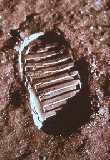
The Soviet spacecraft Luna 2 became the first human-made object to land on the Moon in 1959. It remains the only celestial body that has been directly visited by humans. The historic first manned moon landing took place on July 20, 1969, with subsequent missions taking place until December 1972. Notably, the Moon is the only celestial object from which samples of soil have been returned to Earth. In 1994, the small spacecraft Clementine created a detailed map of the Moon, and this was followed by another mapping mission by the Lunar Prospector in 1999.
However, the Earth is not completely composed of liquid. Due to the friction and rotation of the Earth, the humps are slightly offset from the direction of the Moon. As a result, the force between the Earth and the Moon does not act exactly along the line connecting their centers, creating a torque that decelerates the Earth’s rotation and accelerates the Moon’s motion (causing it to move further away from us). This phenomenon leads to the transfer of rotational energy from the Earth to the Moon, causing the Earth’s rotation to slow down by approximately 1.5 milliseconds per century and expanding the size of the Moon’s orbit by about 3.8 centimeters per year. (Conversely, satellites with unconventional orbits like Phobos and Triton experience opposite effects.)
The gravitational interactions between the Earth and the Moon are asymmetrical, which is why the Moon always faces the same side towards the Earth. This synchronization of rotation and orbit is caused by the Earth’s tidal forces, which have also been slowing down the Earth’s rotation. In the distant past, the Moon’s rotation was significantly slowed by these tidal forces, until it reached a stable state where its rotation period equaled its orbital period. This resulted in the non-central forces acting on the Moon almost disappearing. Similar processes have occurred with other satellites in the solar system. Eventually, the Earth’s rotation will also slow down to match the Moon’s rotation period, as has happened with Pluto and Charon.
The Moon’s orbit is slightly non-circular, causing it to be a bit wobbly. As a result, we can catch glimpses of a few degrees of its backside from time to time. However, it wasn’t until 1959 that the Soviet Luna 3 spacecraft captured the first photographs of the majority of the back side (left), which was previously completely unknown. It’s important to note that there is no “dark side” of the Moon, as all parts of it are illuminated by sunlight for half a revolution, except for certain deep craters near the poles.
Unlike Earth, the Moon doesn’t have an atmosphere. However, data from the Clementine mission has suggested the presence of water ice in some of the deep craters near the Moon’s south pole that are always in shadow. These findings have been confirmed by surveys conducted by the Lunar Prospector. It’s likely that ice is also present at the north pole. This discovery is significant as it will greatly reduce the cost of future lunar exploration!
The average thickness of the lunar crust is 68 km and it varies from 0 km under the Sea of Crises (Mare Crisium) to 107 km in the Queen Crater on the far side of the Moon. Below the crust lies the mantle and potentially a small core (approximately 340 km in radius and constituting around 2% of the Moon’s total mass). However, unlike Earth’s mantle, the lunar mantle is only partially molten. Interestingly, the Moon’s center of mass is displaced by nearly 2 km towards Earth in relation to its geometric center. Additionally, the lunar crust is thinner on the side facing towards us.
There are two primary categories of lunar terrain: one that is heavily cratered and ancient, and another that is relatively smooth and younger, known as the highlands and the seas (maria). The seas, which make up approximately 16% of the Moon’s surface, are massive impact craters that were subsequently filled with molten lava. A significant portion of the lunar surface is covered in regolith, a combination of fine dust and rock fragments resulting from meteor impacts. Curiously, the majority of the seas are located on the visible side of the Moon for reasons yet to be determined.
The lunar soil samples collected by the Apollo and Luna programs have provided an invaluable opportunity for scientists to conduct a comprehensive analysis of the Moon. With a total of 382 kg of lunar soil brought back to Earth, these samples have played a crucial role in advancing our understanding of our celestial neighbor.
One major advantage of these lunar soil samples is their potential for dating. By examining the composition and structure of these samples, scientists have been able to determine their age. Even two decades after the last moon landing, researchers continue to study these precious samples, unearthing new insights into the Moon’s history.
Interestingly, most rocks on the Moon’s surface are estimated to be between 4.6 and 3 billion years old. This age range aligns with the oldest rocks found on Earth, although rocks older than 3 billion years are extremely rare on our planet. Consequently, the Moon provides a unique opportunity to study the early evolution of the Solar System, offering evidence that is not readily available on Earth.
Researchers had different theories about the origin of the Moon before examining the Apollo soil samples. There were three main theories: co-accretion, which suggested that the Moon and the Earth formed simultaneously from the Proto-Solar Nebula; fission, which proposed that the Moon separated from the Earth; and capture, which argued that the Moon originated elsewhere and was captured by the Earth. None of these theories could account for all the known facts. However, the study of rock samples from the Moon provided new detailed information that led to the development of a new theory: the impact theory. According to this theory, the Earth collided with a massive object, possibly Mars or larger, and the material ejected from the collision formed the Moon. While there are still unanswered questions, the impact theory is now widely accepted.
The Moon does not possess a global magnetic field, although certain rocks on its surface exhibit residual magnetism. This suggests that a magnetic field may have been present during earlier periods in the Moon’s history.
Due to the absence of an atmosphere and magnetic field, the Moon’s surface is directly exposed to the solar wind. Over the course of the Sun’s more than 4 billion years of existence, a significant quantity of hydrogen ions carried by the solar wind have become embedded in the lunar regolith. Consequently, the regolith samples collected during the Apollo missions have facilitated the study of the solar wind. In the future, this lunar hydrogen could potentially be utilized as a source of rocket fuel.
Learn more about the Moon
- Additional pictures of the Moon
- Images from LANL
- Images from RPIF
- Images from StarDate
- Images from RGO
- Images from NSSDC
- Images from NASA Space Links
- Useful information for teachers about the Moon, including details on lunar geology
- Lunar rocks and regolith explained
- A comparison between Io and the Moon from LANL
- Discover life under the Moon, based on the excellent work of Phil Plait’s Bitsize Astronomy site
- An explanation of why the Moon appears larger near the horizon
- A detailed explanation of tides, including their causes and effects
- Learn about the slowing of the Earth’s rotation and the concept of running seconds
- Explore historical information about observations of the Moon
- Discover the fascinating world of lunar meteorites
- Understand the different phases of the Moon
- Impact (collision) theory of the Moon’s formation
- Dr. William C. Hartman’s excellent drawings depicting the origin of the Moon
- An extract from Earth and Sky
- The origin of the Earth and Moon, as explained by G. J. Taylor from the Institute of Geophysics and Planetary Science, Hawaii
- Big Bang, New Moon (from the Seward-West Research Institute)
- A groundbreaking theory connecting the Moon’s current orbit to its formation through a massive impact (from the Sevareo-West Research Institute)
- Lunar research from LPI, featuring high-quality images from Lunar Orbiter and a wide range of research texts
- Comprehensive information and images about the Apollo missions
- The Apollo Mission
- Scientific discoveries made during the Apollo missions
- Apollo 11 at Twenty-Five (ExInEd Hypercard stack)
- Images and information about Luna-17
- Planetary missions and materials and research server
- Clementine – DSPSE (including several good images)
- Lunar Prospector
- LunarSat, Europe’s first lunar mission
- The Artemis Project, a private venture to explore the peculiarities of the Moon!
- Lunar Prospector Special Report
- Eureka! Lunar Prospector has found it
- article on lunar ice
- another article on lunar ice
- Lunar Prospector’s second major report
- Moon in science fiction, huge bibliography
- From a Cannon to the Moon, science fiction by Jules Verne
- Chinese legends about the moon
Unanswered Queries
- What is the reason for the concentration of Seas on the visible side?
- Is the off-center center of mass of the Moon due to tidal synchronization with Earth?
- With the recent discovery of water on the Moon, what plans do we have for it?
- Out of the twelve individuals who have walked on the Moon, who will be the lucky thirteenth? And who will be the pioneering woman?
Every night, we have the opportunity to witness the presence of our natural satellite, the Moon, in the sky. However, have you ever pondered its origin? For billions of years, it has illuminated the Earth, and in the past, it was much closer. Could there have been a time when it didn’t exist at all? The question surrounding the Moon’s appearance is truly fascinating.
As of now, scientists have yet to provide a definitive answer to this question. Nevertheless, there are several hypotheses, and surely one of them will eventually prove to be correct. So, let’s explore the most plausible explanations.
All the hypotheses can be categorized into one of three scenarios:
- The Earth and the Moon formed independently from separate protoplanetary clouds.
- The Earth captured the Moon, which originated from elsewhere but happened to pass by.
- The Earth and a massive celestial object, potentially another planet, collided, leading to the ejection of materials and debris from the Earth’s surface. These materials and debris then came together to form our satellite, the Moon.
These various accounts of the Moon’s origin are significantly distinct. Let us examine the compositions of the Earth and the Moon to ascertain which version is more accurate. By doing so, we can establish the validity of the final hypothesis.
Comparisons and Contrasts between the Earth and the Moon
Since the time Galileo Galilei first laid eyes on the Moon and discovered its mountainous terrain, it has been evident that our celestial neighbor shares some similarities with our own planet. In fact, there were even observations of what appeared to be “seas” on the Moon, although they were later determined to be barren deserts. However, despite these surface-level similarities, the Earth and the Moon actually have very little in common. The most striking similarity is the presence of a similar level of oxygen isotopes in their crust and mantle, suggesting that both bodies formed from the same protoplanetary cloud and at the same distance from the Sun. In contrast, celestial bodies that formed elsewhere exhibit significant differences in this regard. Additionally, there are numerous disparities in terms of composition and structure:
- The Moon’s average density is nearly half that of Earth, primarily due to Earth’s substantial metallic core, which accounts for 30% of the planet’s weight. In contrast, the Moon has a small iron-nickel core that makes up less than 3% of its total mass. Interestingly, the Moon’s density is similar to that of Earth’s mantle.
- Unlike Earth, the Moon contains significantly less hydrogen, nitrogen, fluorine, and noble gases. These volatile substances have the potential to escape into space over billions of years. However, the lunar rock does contain higher levels of titanium, thorium, uranium, and other heavy elements compared to Earth.
- The Moon possesses an exceptionally thick crust, measuring up to 80 kilometers in thickness, several times thicker than Earth’s crust. Additionally, the Moon’s crust is composed of a frozen mantle, leading scientists to speculate that the Moon was once entirely molten.
- The lunar orbit is not aligned with the Earth’s equator; rather, it is inclined. On the other hand, the satellites of other planets often orbit in the same plane as their equators.
From this, several conclusions can be deduced. Thus, let us explore the theories regarding the origin of the Moon as it exists today.
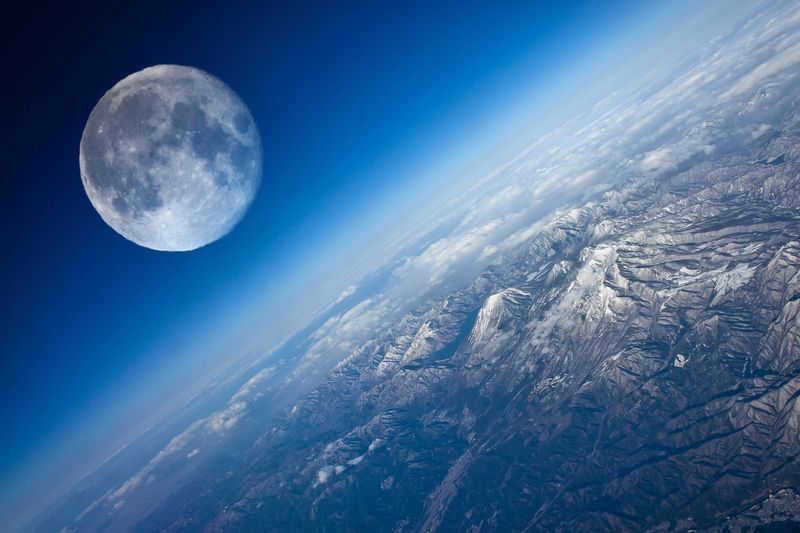
The Moon separated from the Earth due to its rapid rotation
This phenomenon is known as the “centrifugal separation hypothesis”. According to this theory, the young Earth was rotating at a high speed, causing it to become significantly flattened. As a result, a portion of matter broke away from the equatorial region due to the centrifugal forces, eventually forming the Moon.
This hypothesis was initially proposed in 1878 by George Darwin, the son of the renowned Charles Darwin. It gained significant recognition during the early 20th century and scientists even believed that the detached piece of matter is now located in the Pacific Ocean, fitting perfectly in terms of its volume.
In order for this scenario to occur, the Earth would have had to spin at an incredibly high speed, completing a full rotation on its axis in less than 2 hours. However, it is highly unlikely that the Earth could have gradually slowed down to its current 24-hour rotation over time. Additionally, geological evidence contradicts this theory, as the formation of the Pacific Ocean basin occurred only 70 million years ago, while our moon is estimated to be over 4 billion years old. Furthermore, the chemical composition of the moon differs from that of the Earth.
As a result, this theory regarding the origin of our natural satellite has been completely discredited, although it was once widely accepted.
The Earth’s capture of the Moon
An alternative theory known as the “capture hypothesis” emerged in 1909 to explain the origin of the Moon. While this theory is supported by the legends of some ancient cultures, it lacks substantial scientific evidence. The lack of additional facts makes it difficult to rely solely on this hypothesis.
There are several counterarguments against the capture hypothesis:
- The Moon is a significantly large and massive celestial body. If it were captured by the Earth, it would have had to pass dangerously close, potentially within the Roche limit. However, such proximity would subject the Moon to intense tidal forces, resulting in its destruction. If the Moon had traveled a greater distance, it would have either collided with the Earth or been flung away due to gravitational forces.
- All the satellites of other planets that have been captured move in a retrograde orbit, which means they move against the rotation of the planet. However, the Moon is unique in that it has a prograde orbit, meaning it rotates in the same direction as the Earth. It seems as though the Moon has always been a part of our planet’s system.
- If the Moon had originally formed farther away from the Earth, perhaps in the region where gas giants like Jupiter and Saturn are found, it would contain a variety of volatile elements such as hydrogen, fluorine, and noble gases. However, these elements are scarce on the Moon. Instead, it has a small core similar to the satellites of giant planets.
- Interestingly, the Moon and the Earth have very similar oxygen isotope compositions. This suggests that the Moon was not captured from an external source, as the chances of finding such a precise match would be highly unlikely.
- If the Moon had been captured, it would likely have a highly elongated orbit. However, in reality, its orbit is not significantly different from a circular one. This further supports the idea that the Moon has always been a part of our planet’s system.
The Formation of the Moon and Earth Occurred Simultaneously
Referred to as the “co-formation hypothesis,” this theory suggests that the Moon and Earth were created together from a single protoplanetary cloud. As the nebula contracted, the central region gave rise to the Earth, while the outer region resulted in the formation of the Moon.
Interestingly, this hypothesis dates back to 1755 when Immanuel Kant first proposed it. The alignment of oxygen levels in rock samples provides compelling evidence in support of this idea.
However, there are numerous drawbacks associated with this hypothesis. The distinction in the remaining chemical composition remains ambiguous. If the Earth and the Moon were indeed formed from the same celestial cloud, their chemical composition should be identical. Moreover, while the planet possesses a massive iron core, the satellite has a significantly smaller amount of iron. Additionally, there is a notable disparity in average density. The inclination of the lunar orbit cannot be accounted for as well.
Consequently, despite its initial plausibility, this theory also contains unexplained aspects.
The moon emerged subsequent to the formation of the Earth
In 1955, a hypothesis known as the “vaporization hypothesis” was proposed. According to this theory, the Earth was initially formed, surrounded by a mass of material from the protoplanetary cloud. As a result, various-sized rocks continuously bombarded the Earth, causing its temperature to rise to 2000 degrees. Consequently, numerous elements from the Earth’s upper layers evaporated into space and eventually contributed to the formation of the Moon using remnants from the protoplanetary cloud.
However, during the heating process, the Earth’s core had already solidified, with massive iron rocks settling at its center. This explains why the Moon possesses a relatively low iron content.
This hypothesis provides a satisfactory explanation for the chemical composition of the Moon and its divergence from that of the Earth. However, it fails to account for geological evidence suggesting that the Earth’s crust has never experienced complete melting. Additionally, it does not address the peculiar tilt of the lunar orbit and other related issues.
The Moon originated from a cluster of small satellites
We have previously examined the “capture hypothesis” and determined its implausibility. The Earth would not have been able to capture a massive celestial body like the Moon, let alone maneuver it into a stable circular orbit around the Earth. However, it could have plausibly captured multiple smaller objects, such as large asteroids. These asteroids could have collided with one another while orbiting the Earth, eventually coalescing to form a single large celestial body from the resulting debris.
However, this theory regarding the origin of the Moon has numerous shortcomings. Firstly, it fails to account for the similarities in oxygen content. If the Moon had formed from asteroids originating from outside sources, its composition would be vastly different from that of Earth, yet it is relatively similar.
Secondly, it seems highly improbable that Earth could have captured enough asteroids to give rise to the Moon. Venus, for instance, has not managed to capture a single asteroid over the course of billions of years, and Mars only possesses a few small ones, despite the proximity of the asteroid belt.
Thirdly, it is unlikely that all of the captured asteroids would have collided and coalesced into a single satellite, especially within a short timeframe. Mars, for example, has harbored both Phobos and Deimos for billions of years without any indication of collision. The gas giants also boast numerous satellites that have managed to coexist without colliding with one another.
This particular hypothesis emerged in 1975 and is currently regarded as one of the most plausible explanations. According to this theory, the Moon came into existence as a result of a collision between a young Earth and another young celestial body known as Teia. The impact of Teia on Earth was tangential, causing a significant amount of terrestrial material from the mantle to be ejected into space. These remnants of Teia eventually coalesced to form the Moon. Initially, the Moon was situated a mere 60,000 kilometers away from Earth.
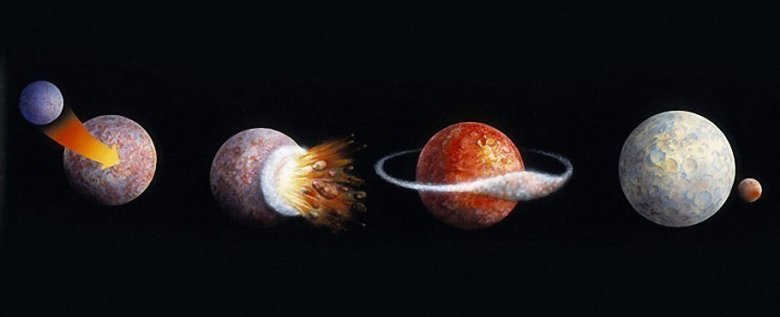

This theory effectively explains both the similarities in chemistry between the Moon and Earth, as well as some of the differences. The slight tilt of the lunar orbit can be attributed to the impact that caused the Earth to tilt slightly. The scarcity of iron on the Moon can also be explained by the ejection of Earth’s material from the upper layers and mantle, leaving behind a already-formed core.
In order for this hypothesis to be plausible, it must be assumed that Theia collided with Earth at a low speed and tangentially. This could have occurred if Theia also formed on a planet similar to Earth, located at one of the Lagrangian points. Essentially, Theia would have been a twin of our Earth, sharing the same orbit.
Given that this rendition appears rather credible and offers an explanation for numerous phenomena, it is widely regarded as the prevailing account. However, further extensive investigation is imperative to substantiate it. After all, assuming there was a collision, it transpired approximately 4.5 billion years in the past, rendering the procurement of evidence quite challenging. Moreover, an elucidation is necessary for this peculiar circumstance – during the collision with Theia, the Earth should have experienced significant heating and subsequent loss of all its water, yet this scenario did not materialize.
The Moon was created when meteorites ejected matter from Earth
This is a revised theory that emerged in 2007. According to this theory, the early Earth experienced a significant bombardment of meteorites, ranging in size from tens to hundreds of kilometers. As a result, a substantial amount of Earth’s material, including water, was expelled into space. The Moon then formed from this ejected substance.
This hypothesis suggests multiple localized collisions with large meteorites, rather than one collision with a planet called Theia. This scenario would have prevented the Earth from becoming excessively hot and losing its water, which supports this version. Additionally, the presence of water ice on the Moon further supports the possibility of its preservation.
This hypothesis regarding the formation of the Moon is still under investigation and actively studied. While there are some supporting facts, there are also potential challenges that need to be addressed.
How did the Moon come into existence?
As of now, there is no definitive answer to this question. Various theories have been proposed, but the two most plausible ones involve either a collision between the Earth and a large protoplanet called Teia, or a series of collisions with numerous large meteorites. In either scenario, the Moon would have primarily formed from Earth material, with some contributions from the other bodies involved in the collisions. This would account for the similarities in chemical composition between the Moon and Earth, as well as some differences. Additionally, it would explain the inclination of the Moon’s orbit and the early rapid rotation of the Earth.
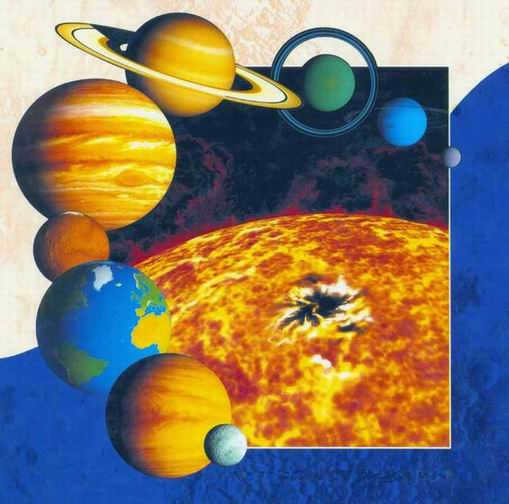
The Moon is situated only 380,000 kilometers away from our planet Earth. It stands out as the sole celestial body in outer space that has been explored by humans. Devoid of an atmosphere, water, or weather, the Moon’s surface showcases an array of mountains, craters, seas composed of solidified lava, and layers of dust. It is conceivable that within the next century, we will establish space stations on the Moon to facilitate scientific research.
Among the planets in the inner solar system, Earth is unique in possessing a sizable moon. Boasting 81 times the mass of the Moon and a radius nearly four times greater, Earth and the Moon are united by the gravitational force. On the lunar surface, the gravitational pull is six times weaker than on Earth due to the Moon’s smaller mass. This weakened gravitational force is so feeble that all the air and water that once existed on the Moon have dissipated into space.
The Moon maintains a constant orientation towards the Earth, always presenting the same side of its body. While it does experience some slight oscillations, these movements allow us to catch glimpses of additional portions of the lunar surface from our vantage point on Earth. As a result, we are able to observe nearly three-fifths of the Moon’s sphere. This phenomenon, known as libration, causes the Moon to appear slightly different throughout the month, revealing just over half of its total surface area. Recent spacecraft photographs have revealed that the far side of the Moon is predominantly mountainous in nature.
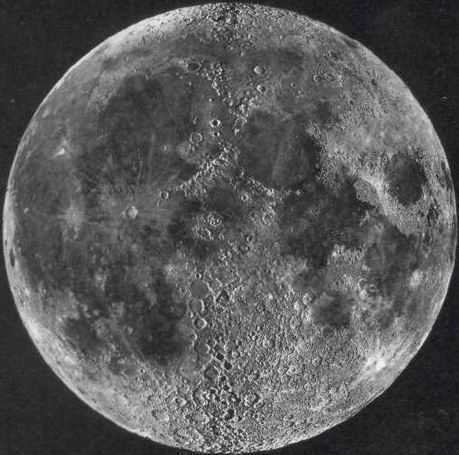 | This composite image of the Moon is created by combining two separate photographs. Each photograph was taken at a time when only half of the lunar disk was visible from Earth. The resulting image reveals a wealth of intricate details, as the Sun’s light illuminates the craters and mountains from a specific angle, casting long shadows. In contrast, a photograph taken during a full moon would have fewer shadows, allowing for a clearer view of the lunar surface’s features. |
Observing the Moon
Observing the Moon doesn’t require any special instruments. Simply spend some time looking at the Moon over the course of a month and take note of the changes in its phases. During the few days surrounding the new moon, the Moon may be completely invisible. It’s fascinating to observe that the Moon consistently presents the same side to the Earth and that there are distinct bright and dark regions, as well as mountainous areas.
When using binoculars for lunar observation, a plethora of remarkable features become apparent. One immediately notices the presence of dark, almost level areas known as “seas” (maria in Latin), which Galileo himself likened to Earth’s oceans. These expansive plains are actually vast lava-covered terrains that originated from the Moon’s interior in ancient times. Additionally, various colossal craters, formed billions of years ago due to colossal asteroid impacts, can be observed. Moreover, along the boundary between the illuminated lunar surface and the dark portion, one may occasionally discern the presence of rugged mountains.
The visual spectacle that unfolds before your very eyes bears an uncanny resemblance to the awe-inspiring imagery that captivated Galileo when he first directed his telescope towards the Moon back in 1610.
Once you have observed the Moon for approximately seven days, you will be able to observe a noticeable change in the size of shadows cast by mountains and craters.
Harrison Schmitt, an American astronaut from the Apollo 17 mission, used a specialized instrument to collect samples of lunar soil during a lunar landing in December 1972.
The Moon’s Surface: A Unique Environment
Unlike Earth, the Moon lacks an atmosphere, resulting in a distinct celestial experience. The absence of air prevents the scattering of sunlight, leaving the sky perpetually black, even during daylight hours. Consequently, the Moon remains silent, as sound waves cannot travel in the vacuum of space. Furthermore, the Moon is devoid of weather systems, meaning rain, rivers, and ice fail to shape its landscape as they do on Earth.
During daytime, the lunar surface is exposed to the intense heat of the Sun, causing temperatures to soar well above the boiling point of water. To combat these extreme conditions, researchers exploring the Moon don specialized spacesuits that sustain human-friendly physical parameters, including a supply of breathable air. Conversely, nighttime on the Moon brings frigid temperatures, plummeting to 150°C below the freezing point of water.
Investigation of the Moon
In 1959, a spacecraft from Russia successfully completed the initial orbit around the Moon and sent back somewhat blurry images of its rear side. Exactly a decade later, American researchers achieved a historic milestone by landing a spacecraft on the lunar surface. Over the course of six Apollo missions from 1969 to 1972, a series of experiments were conducted and a remarkable 385 kilograms of lunar rocks and dust were collected and returned to Earth.
Prior to the Apollo missions, spacecraft were sent to the Moon, circling it and capturing highly detailed images in order to identify a suitable landing site. The lunar surface was examined by robots to determine its hardness, as many scientists believed that there was a thick layer of dust covering it. However, the landing module only sank a few centimeters into the ground, proving that walking on the Moon was possible without sinking into the dust. In the initial lunar landings, astronauts explored on foot, staying close to the spacecraft. Later, a rover was utilized, enabling astronauts to spend several days on the Moon. Various instruments were used during scientific experiments to measure lunar earthquakes (or more precisely, tremors). Samples from the Sun were also analyzed, along with the heat emissions from the Moon.
The moon’s age
Scientists have determined the age of the Moon by examining the radioactive substances present in lunar rocks. One specific example is the decay of uranium into lead over time. In a sample of uranium-238, half of the atoms transform into lead atoms in a span of 4.5 billion years. By analyzing the ratio of uranium to lead in a rock, its age can be calculated: the higher the lead content, the older the rock. The solidification of rocks on the Moon occurred approximately 4.4 billion years ago. It is believed that the Moon formed shortly before that, with an estimated age of around 4.65 billion years. This aligns with the ages of meteorites and estimates for the age of the Sun. Prior to the Apollo program, the age of the Moon was purely speculative.
Lava streams and devastating collisions
The oldest rocks on the Moon can be found in mountainous regions, while the rocks taken from solidified lava seas are significantly younger. During its early stages, the Moon’s outer layer was in a liquid state due to its extremely high temperature. As the Moon started to cool down, its outer covering, also known as the crust, gradually formed, with certain parts now existing in mountainous regions. Over the course of the next 500 million years, the lunar crust experienced continuous bombardment from asteroids and large rocks that were a result of the solar system’s formation. These intense impacts created massive indentations on the surface, which eventually transformed into the lunar seas. Similar bombardments occurred on Earth, but the erosive forces have almost completely erased any evidence of such cataclysms. While the Moon’s outer layers continued to cool down, its inner regions were heated by radioactivity. Between 4.2 and 3.1 billion years ago, lava flowed through openings in the crust, filling the circular basins left behind by the colossal impacts. This lava was completely molten and covered extensive flat areas, ultimately forming the lunar seas. Therefore, Galileo was partially correct when he referred to these Moon regions as “seas,” as they were solidified oceans of rock that were once in a liquid state. The lava flow continued for approximately one billion years, and we acquired this knowledge by studying the age of lunar rocks.
Approximately two billion years ago, the Moon’s volcanic activity ceased, and the outer layers of rock solidified, preventing lava from reaching the surface. As a result, any alterations to the Moon’s surface since then have been solely the consequence of impacts from celestial bodies. The presence of expansive craters with emanating rays can be attributed to the intense force of these collisions, which generated explosive eruptions and dispersed rock fragments in a radial pattern over hundreds of kilometers. The impacts of smaller rocks caused the surface to fracture, resulting in the formation of smaller craters.
Exploring the interior of the moon
During their mission, the astronauts placed seismometers at four different locations on the Moon. These instruments were designed to measure the slight tremors that occur on the lunar surface, although they are much weaker than the earthquakes we experience on Earth. By analyzing the vibrations caused by moonquakes in various areas, scientists can gain valuable insights into the internal structure of the Moon. The way in which these tremors propagate reveals that the lunar crust has a thickness ranging from 60 to 100 kilometers. Beneath the crust is a layer of cold, dense rock that extends for 1,000 kilometers. Finally, at the deepest level, there is a hot, partially molten core. However, unlike the core of the Earth, the Moon’s core contains very little iron, which is why it lacks a magnetic field.
Before scientists examined moon rocks, they had three hypotheses regarding the origin of the moon, but none of them could be definitively proven. One hypothesis suggested that the early Earth was spinning so rapidly that it expelled some matter, which then formed the Moon. Another hypothesis proposed that the Moon originated from outer space and was captured by the Earth’s gravity. The third hypothesis suggested that the Earth and the Moon formed separately, nearly simultaneously, and at a similar distance from the Sun. The dissimilar chemical compositions of the Earth and the Moon indicated that these celestial bodies were unlikely to have originated as a single entity.
Not long ago, a new theory emerged, which is now widely accepted. It is called the giant impact hypothesis. According to this hypothesis, during the formation of the planets we see today, a celestial body the size of Mars collided with the young Earth at a glancing angle with a tremendous force. This collision caused the lighter materials from the Earth’s outer layers to be ripped off and scattered into space, forming a ring of debris around the Earth, while the Earth’s iron core remained intact. Over time, this debris ring gradually coalesced to form the Moon. The giant impact theory provides an explanation for why the Earth has a significant amount of iron, while the Moon has very little. Additionally, the collision released various gases, including oxygen, from the material that eventually formed the Moon.
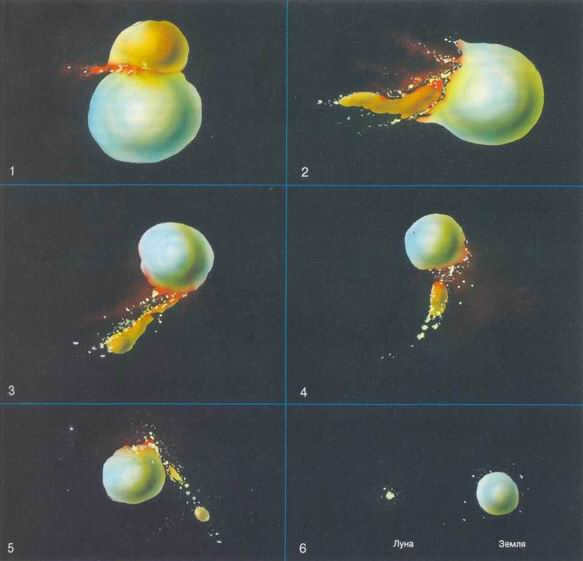 |
These visual representations provide an explanation for the origin of Earth’s natural satellite, the Moon. Utilizing computer simulations, scientists have hypothesized that if a planet with similar dimensions to Mars had collided with the Earth shortly after its formation, a lengthy trail of rocky fragments would have trailed behind the Earth resembling a tail. The debris, which contained iron, would have descended upon Earth and penetrated its interior. Subsequently, these constituent parts of the rocky trail would have merged together, resulting in the formation of the Moon. |
Coming Back to the Moon
The contamination of the Earth’s natural environment is posing a growing challenge in the observation of the celestial sphere. The illumination from expansive urban areas, the presence of smoke and volcanic emissions, and the interference from television stations are all contributing to the pollution of the night sky, hindering the field of radio astronomy. Furthermore, the Earth’s surface is incapable of facilitating observations in the infrared, ultraviolet, and X-ray wavelengths. Thus, the imminent advancement in the exploration of the cosmos might entail the establishment of a scientific settlement on the Moon.
An observatory on the Moon would be an excellent location for studying the universe. While telescopes like the Hubble Space Telescope currently orbit the Earth to observe space, a lunar observatory would have numerous advantages. For one, telescopes on the Moon would not be affected by the Earth’s atmospheric conditions, allowing for clearer and more precise observations. Additionally, being shielded from the Earth’s reflected light, instruments on the back side of the Moon would have a much darker background, making it easier to detect faint celestial objects. Moreover, the Moon’s slow rotation would result in lunar nights lasting for 14 Earth days, providing astronomers with extended periods of uninterrupted observation time. This longer duration would enable scientists to gather more data and study stars and galaxies in greater detail than ever before.
Lunar resources
The Moon has the potential to serve as a hub for space exploration beyond its current boundaries. The reduced gravity on the lunar surface makes it 20 times more cost-effective and easier to launch a large space station from compared to Earth. Additionally, the Moon contains hydrogen and oxygen in its rocks, which could be utilized to produce breathable water and gases. The abundance of valuable resources such as aluminum, iron, and silicon on the Moon would provide a valuable source of building materials.
A lunar base would play a crucial role in further exploration and prospecting for valuable raw materials available on the Moon. It would also serve as a platform for solving various engineering challenges and conducting space research under lunar conditions.
Robotic Involvement in Astronomy
In 1994, the Clementine program initiated the launch of a compact satellite into lunar orbit. This marked the initial phase in the resumption of lunar exploration following a twenty-year pause. The subsequent phase is anticipated to encompass the establishment of automated observatories featuring robotic technology. Astronomers have already accumulated considerable expertise in operating space-based telescopes. Missions to the Moon executed by robots will serve as the inaugural stage of lunar exploration and exploitation.
There are plans to establish lunar observatories on the far side of the Moon, necessitating the launch of satellites into lunar orbit to receive signals and transmit them back to Earth. The telescopes used in these observatories must be capable of operating autonomously and enduring extreme temperatures. One concept currently being developed at the University of Arizona (USA) involves the creation of a stationary telescope that minimizes the use of moving components. As a result of the Moon’s slow axial rotation and its orbital movement around the Earth, the viewing direction of this telescope will gradually shift in a cycle lasting 18.6 years. This unique design will enable the telescope to observe millions of stars and galaxies over time.
It is also possible to construct sizable lunar radio telescopes, enabling the reception of exceptionally long radio waves from outer space. Through the integration and analysis of data collected from both Earth-based and lunar telescopes, researchers will gain unprecedented insight into the cores of the universe’s most formidable galaxies.





